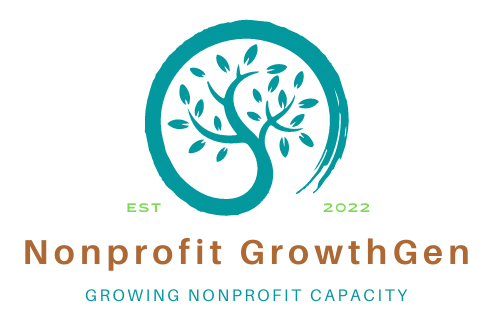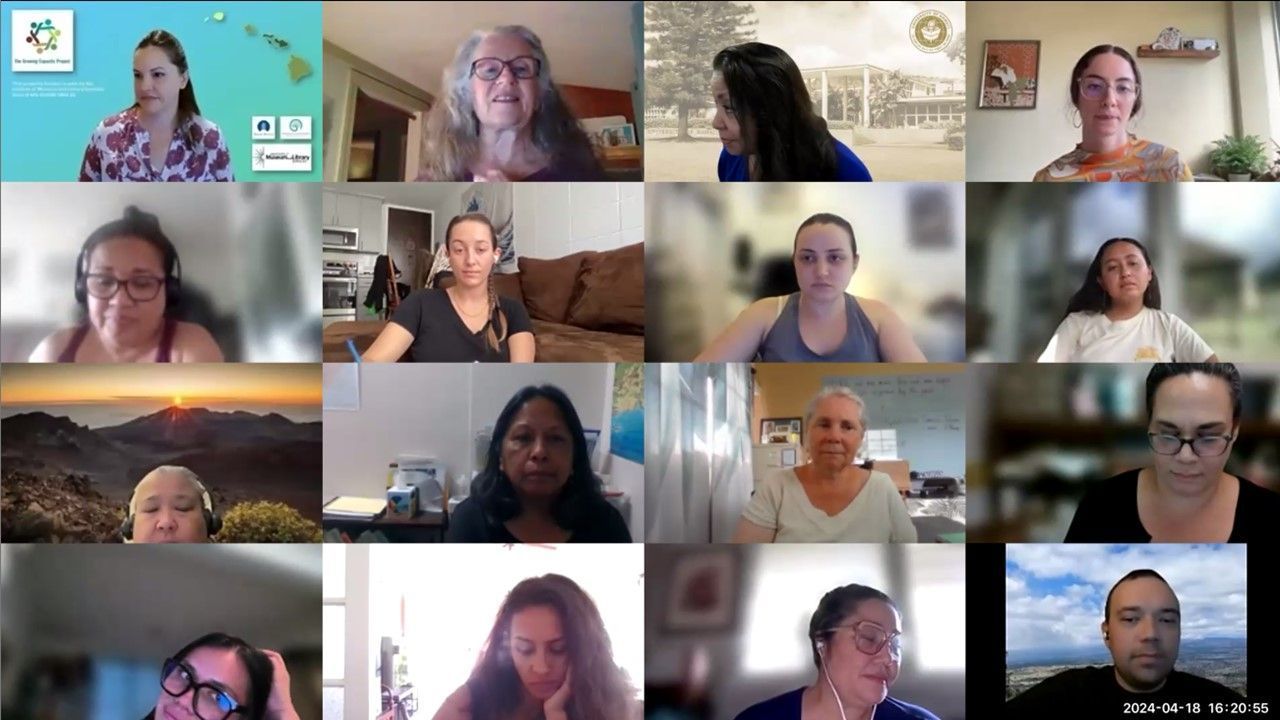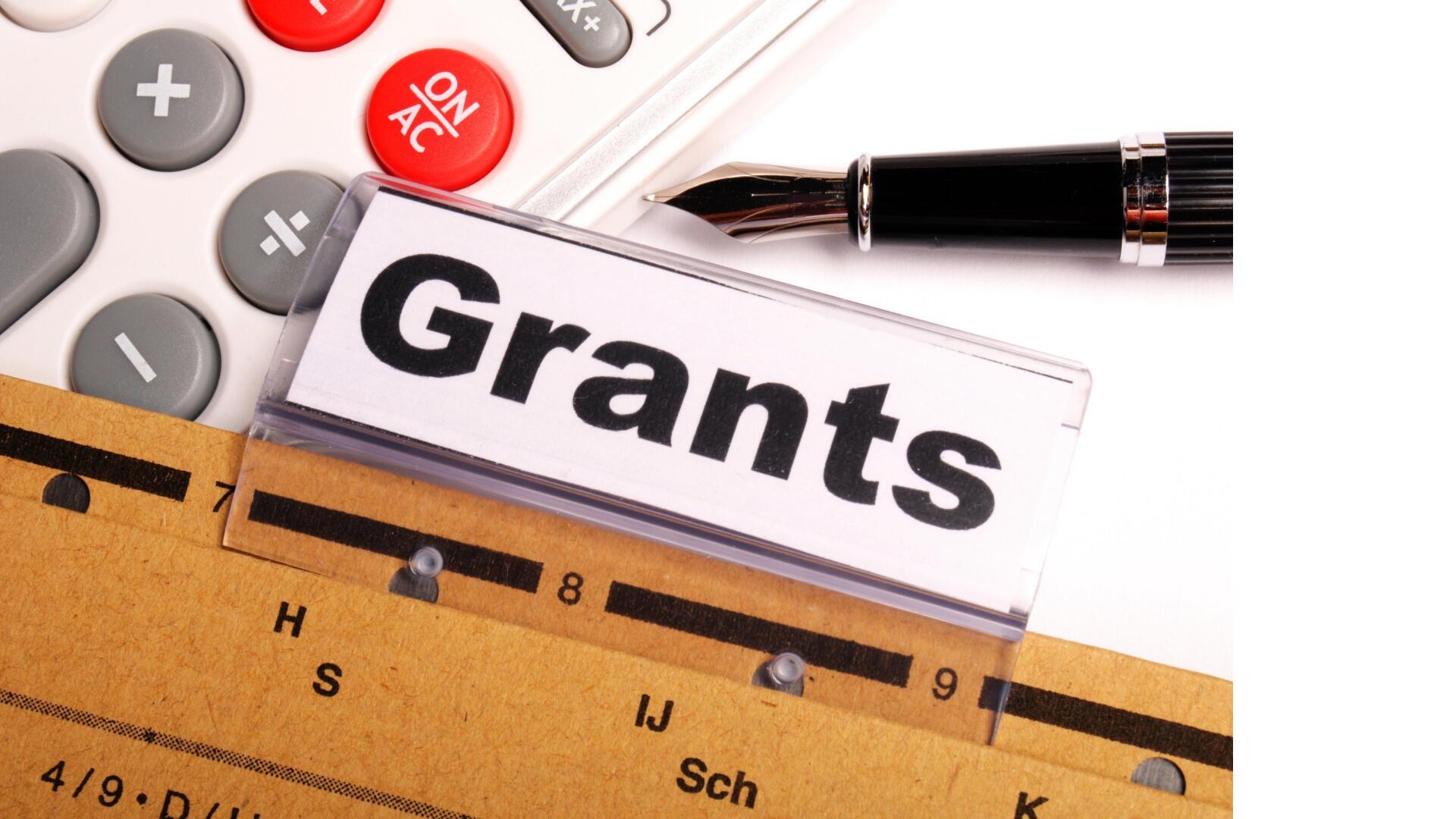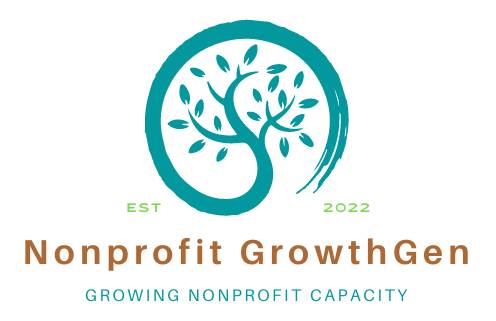What insight will Mary share today?
A reflection on Program 1 of the Growing Capacity Project
with Cofounder Mary Ramsay
Nonprofit GrowthGen Co-founder Mary Ramsay sat down with student worker Brentley Sandlin to reflect on Growing Capacity Program 1: Gathering Resources in Hawaiʻi for Hawaiʻi.
For six weeks, the Program 1 cohort explored, pooled, and provided resources and content based upon topics identified by community members in non-profit museums, library archives, and other museum-like cultural organizations in Hawai’i. The topics ranged from fundraising approaches to centering community needs, and we prioritized making space for our participants to build community and crowdsource solutions and collaborations to the topics.
1. What needs in the community led you and Mandy to create this program topic? Was there a specific moment that made you feel like this program had to be held? Do you feel like the program addressed those needs sufficiently, and how so?
Mary: When Mandy and I lived and worked in Hawaiʻi, we observed and experienced the desire in the nonprofit sector for professional development and mentoring. Often nonprofits were strapped for time and resources to offer professional development for their staff. Those working in nonprofits also had reservations about consultants who came to Hawaiʻi from the continent to offer professional development and training: there was a ‘one-and-done’ experience that sometimes made it feel extractive for the participants in the training. When Mandy and I had to leave Hawaiʻi because of our family situations, we both had a strong desire to stay connected to the impactful work being done here. We wondered if we could help build grant writing and other skills among Hawaiʻi nonprofit professionals informed by our experience living on Oʻahu and working for a Hawaiian organization.
After piloting a small grant-writing mentoring and training program at Bishop Museum during the pandemic and receiving positive feedback, we were fortunate that Museum leaders wanted to partner with us to make this type of mentorship available to peer institutions and organizations in the state. When we received an IMLS grant through Bishop Museum for the Growing Capacity Project, we knew we wanted our program to be designed with community input. We distributed surveys to learn what staff working in Hawaiʻi nonprofits feel they most need. In an early survey, folks expressed a range of needs related to growing capacity in their organizations, such as board development, strategic fundraising, partnerships, and centering community needs. When sharing the needs identified in the survey with our advisors, they suggested that we tap the expertise of those working in Hawaiʻi now by inviting them to share their own experiences and solutions. This suggestion transformed our approach, placing Mandy and me in the role of organizers/facilitators and our colleagues working in Hawaiʻi as the content experts. Considering our positionality as white women living on the continent, this shift has made a great deal of sense.
Our hope is that those who participate in the Growing Capacity Project can share their experience and knowledge with each other, contributing to a network of leaders and guides in Hawaiʻi who can offer support to each other well beyond this grant-funded program. It is really exciting that participants and even guest speakers from Program 1 are now participants in Program 2! We can all learn from each other and a network of thought partners can help us feel less isolated and alone in the work we do in the museum and culture sectors.
Brentley: Absolutely, I think for you both to adopt a more logistical facilitator role where you take a step back allows a natural sense of sustainable community to emerge amongst Hawaiʻi and Hawaiian museum professionals. And I think the continued buy-in of folks from this program into the next illustrates this deep desire for such connection and peer-to-peer community.
2. What is one quote/concept/moment from a participant or guest speaker that has particularly stuck with you?
Mary: I distinctly remember when a Program 1 cohort member started opening up about her experiences working in a Hawaiʻi nonprofit. She was extremely passionate about the mission of her nonprofit but felt overwhelmed by multiple priorities and goals, high expectations, and what she perceived as her own inexperience. My perception was that her willingness to share her challenges and express her vulnerability opened the door for cohort members to have deeper conversations and see the connections between their own work and that of their nonprofit colleagues. I think this expanded our collective sense of the support we could offer each other as cohort members.
There are many motivations that drive people into nonprofit work but passion often plays a big role, especially considering that the pay is fairly modest and expectations are typically high. How do you figure out how to navigate in this environment and how do you set priorities so that you have some chance of meeting your goals when resources may be constrained? Passion can make it possible to stay committed and focused but can also lead to burnout and overwhelm.When this one class member broke the ice for cohort members to keep it real, she also opened the door for collective problem solving and for colleagues to step forward with their own stories, challenges, and successes. Another moment that has stayed with me was when a guest speaker discussed partnerships and he said something to the effect of “sometimes you have to get a divorce.” We had not gone into our discussion about managing healthy partnerships with this in mind, but it is absolutely true that some partnerships run their course and are no longer relevant to your mission and you have to find a way to respectfully disengage or step away.
Both of these moments reframed the conversation in ways that were unanticipated and added a richness and candor to the exchanges in class. Working in the nonprofit world often requires holding the passion and inspiration alongside the frustration and overwhelm - and we need our colleagues and community to make this sustainable.
Brentley:
Yes, I think these and many other small moments between cohort members show again the necessity of this program in creating ongoing and hopefully long-term connections. Nonprofit work can feel overwhelming and lonely, and the Growing Capacity programs not only build resources and shared knowledge, but also valuable connections and a feeling of community that seems to be much desired.
3. Were there any moments of growth for you while facilitating the program?
Mary: When Bishop Museum learned it had received this grant to support professional development in the Hawaiʻi museum and culture sectors in partnership with Nonprofit GrowthGen, Mandy and I were thrilled. But as we began talking with colleagues in Hawaiʻi and thinking about our positionality as white women now living on the continent, I had a lot of concerns. I don’t think I was conscious enough when we applied for the grant of the potential for reenacting a colonizer scenario. When I realized this, my impulse was to back out and find someone else who was “of Hawaiʻi” to take on this project. I felt that we had been presumptuous in proposing this notion of growing capacity in Hawaiʻi and wondered if it would have been better done by a person or company still residing on-island.
Mandy and I talked about this in depth with our advisors and other colleagues in Hawaiʻi. They provided concrete suggestions for ways we could structure the work drawing on expertise in Hawaiʻi and how we could distribute grant resources to our partners, colleagues, and cohort members in Hawaiʻi. For example, one colleague shared the challenges she experiences in her own museum work where the demands of caring for and managing the collections themselves are so unrelenting that she doesn’t have time to offer opportunities for on-the-job professional development to her staff. In her mind, having people external to her museum providing these opportunities was a plus, allowing her to stay focused on her primary responsibilities. Her perspective supported Mandy’s and my decision to move forward and to consciously build curriculum and experiences rooted in cultural humility. We are committed to helping to grow capacity in Hawaiʻi nonprofits over time, so that our engagement is not just a one-and-done type of thing. All of this has been an area of big growth for me and the growing continues.
Brentley:
I think that is such a crucial and continual process for anyone working in communities that are not their own: how do we leverage our privilege in a beneficial way without falling into a
savior or
expert trope? And how do we make sure we are still doing important work without shying away because we are worried about our own positionality? Audre Lorde has such beautiful writing about the necessity of understanding our differences in ways that allow us to more deeply engage with one another. That is one of the ways the program structure really benefits: you all leverage your expertise in the field by coordinating and connecting with folks here to build the infrastructures, whilst simultaneously letting lived experiences remain at the forefront.
4. What are you looking forward to about Program 2?
Mary: With the experience of Program 1 behind us, it’s exciting to have a “round two,” so to speak. I feel that project management is often the ‘elephant in the room’ for many organizations: we’re all asked to plan and execute projects, but no one is telling us how to do it effectively or mentoring us through a project. Most of the people in organizations who do the bulk of project management are not professionally trained in this area and this was certainly the case for me. We do the best we can but it can be very stressful.
I was involved in the higher education grant world, helping colleagues, who were in the formative stages of developing a project, bring their ideas to life. For me, the relationship between grant writing and project development and management is clear but I was never formally trained in project management. Although I had great mentors who helped me learn on the job, I can’t say we ever took the time to systemize an approach to project management and we rarely debriefed a project or reflected on how the process went before we were on to the next project! Project management is such an important topic and I am so glad we will focus on it in Program 2 for folks working in nonprofits.
I am really looking forward to the first class on pre-launch considerations. I think what happens (or doesn’t) in the early phase of planning a project is critical. I distinctly remember one instance of being asked by senior management to work on a grant proposal without a lot of lead time before the deadline. The project itself was new and had not yet been fully developed. I reached out to my colleague whose department would execute the project, knowing we would be scrambling to bring some clarity to an emerging project so we could meet this grant deadline. My colleague said, “Mary, my team and our partners really needed to be included at the beginning of these grant conversations. This project will require true partnerships and developing these relationships needs way more time than is possible with this deadline.” She ran her own department in a collaborative manner and she was committed to having all stakeholders around the table at the start to co-create a project. Quite honestly, I came into my work in Hawaiʻi with a very western understanding of deadlines and project management, and her framing of project management as a community-engaged process woke me up to the importance of understanding the culture in which I was working.
Brentley:
As we have spoken about throughout the planning of Program 2, project management is so personal, and our own cultural understandings and identities definitely impact the way we perform our work. Understanding our differences and our positionality inside others’ communities helps us to better work side-by-side in meaningful ways. Thank you so much for your time, Mary!




